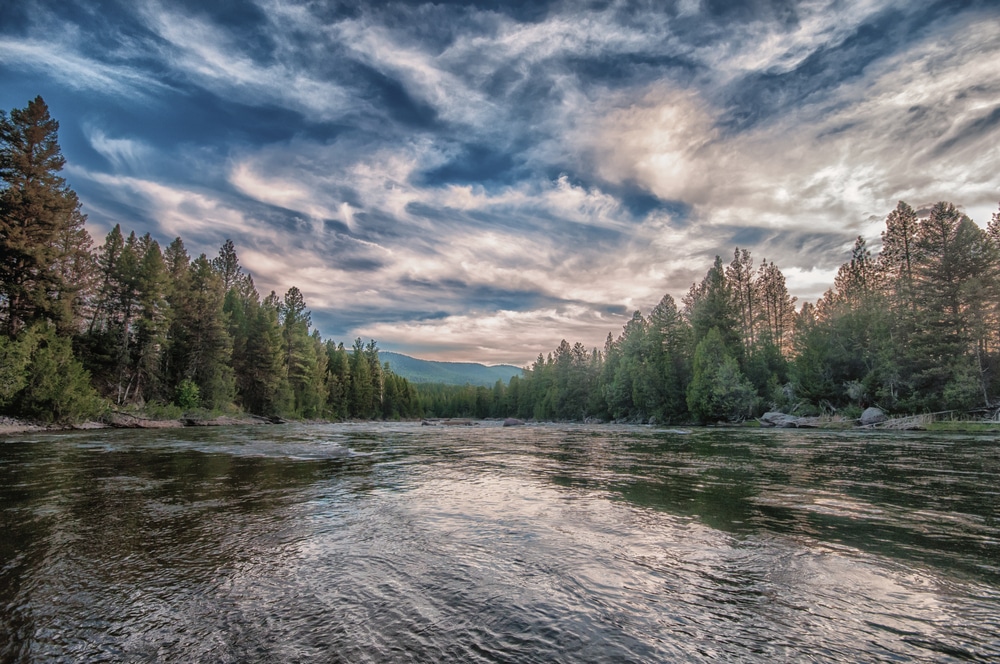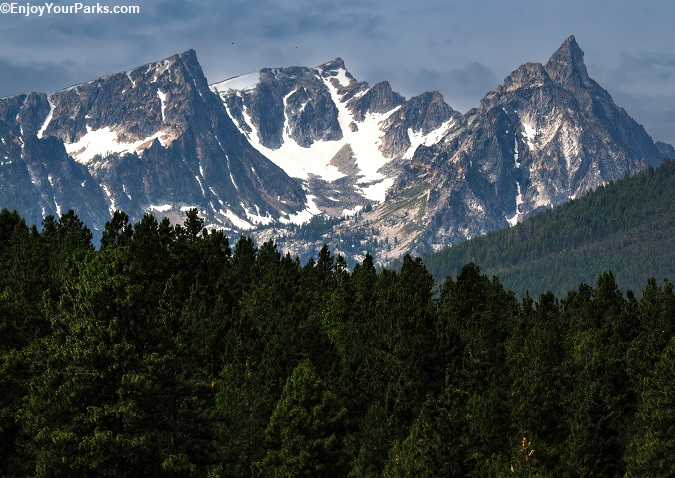
Montana’s Bitterroot Valley: Where Wild West Echoes Meet Modern Allure
The Bitterroot Valley, nestled in the heart of Western Montana, is more than just a geographic expanse; it’s a living tapestry woven from the threads of ancient history, rugged individualism, breathtaking natural beauty, and the persistent hum of change. Flanked by the formidable Bitterroot Mountains to the west and the gentler Sapphire Mountains to the east, the valley stretches for nearly 100 miles, cradling the serpentine Bitterroot River in its verdant embrace. This is a place where the grandeur of the American West isn’t just a nostalgic echo, but a palpable, daily reality, even as modern pressures reshape its contours.
From the moment the towering peaks, often capped with snow long into spring, come into view, one understands the valley’s allure. The air, crisp and often scented with pine and the promise of rain, fills the lungs differently here. It’s a landscape that demands attention, from the fly fisher casting a line into the river’s clear currents to the hiker ascending a steep trail, each seeking solace and challenge in equal measure.
A Deep Rooted History: Indigenous Echoes and Lewis & Clark’s Ordeal

Long before homesteaders arrived with their ploughs and cattle, the Bitterroot Valley was the ancestral homeland of the Salish people, who called it "Sko-ko-mite" – "the place of the bitterroot." This resilient plant, with its vibrant pink flower and edible root, was a vital food source and holds deep spiritual significance, so much so that it became Montana’s state flower. The valley was also a traditional hunting ground and a crucial migratory route for other tribes, including the Nez Perce, who traversed its formidable western mountains on their journey to bison hunting grounds east of the Continental Divide.
It was into this ancient landscape that the Corps of Discovery, led by Meriwether Lewis and William Clark, stumbled in the autumn of 1805. Their passage through the Bitterroot Mountains, guided by the Shoshone woman Sacagawea and her people, was one of the most arduous segments of their epic journey. Famished and exhausted, they were relieved to descend into the valley, which Clark famously described as "a handsom extensive bottom." Their journals recount their desperate need for food and the hospitality of the Salish people, who shared their camas roots and dried berries. This encounter marked the valley’s official introduction to the burgeoning American nation, setting the stage for subsequent waves of exploration and settlement.
From Timber and Tillage to Tourism and Tech
For decades following Lewis and Clark, the Bitterroot Valley remained largely untouched by permanent European settlement. But by the mid-19th century, trappers, prospectors, and missionaries began to arrive. Father Pierre-Jean De Smet established St. Mary’s Mission in Stevensville in 1841, the first permanent non-Native settlement in Montana, a testament to the valley’s early appeal. The fertile soil and abundant timber soon attracted homesteaders, transforming the landscape into a mosaic of ranches, farms, and logging operations.
Agriculture, particularly apple orchards, became a hallmark of the valley. The "Bitterroot Apple" was once a celebrated commodity, shipped across the country. Timber mills hummed with activity, processing the vast forests that blanketed the mountainsides. Ranching, with its enduring symbols of cowboys and cattle drives, has remained a cornerstone of the valley’s identity, with families often tracing their lineage back generations.
However, the 21st century has brought a new economic paradigm. While agriculture and timber retain their importance, the Bitterroot Valley has increasingly become a destination for amenity migrants – those drawn by its unparalleled natural beauty, outdoor recreation, and a slower pace of life. Real estate has boomed, driven by a surge of newcomers seeking refuge from urban centers, accelerated by the advent of remote work.
"We used to know everyone at the grocery store," mused Sarah Jensen, a third-generation rancher in Corvallis, her eyes scanning the distant peaks. "Now, half the faces are new. It’s good for business, but you worry about losing that small-town feel, that sense of community that’s been here forever."
This shift has created a vibrant, sometimes challenging, dynamic. Upscale developments now dot former pastures, and artisanal coffee shops stand alongside feed stores. The valley is grappling with the delicate balance between welcoming growth and preserving the very essence that attracts people in the first place: its wildness, its history, and its community spirit.

A Playground for the Adventurous Spirit
The Bitterroot Valley is, at its heart, an outdoor enthusiast’s paradise. The Bitterroot River, a designated "blue-ribbon trout stream," draws fly fishers from around the globe, eager to cast for native cutthroat, rainbow, and brown trout. Drifting its gentle curves in a McKenzie boat is a quintessential Montana experience, offering not just fishing but an intimate connection with the riparian ecosystem.
To the west, the Bitterroot Mountains rise dramatically, forming a rugged frontier with Idaho. This range is home to vast stretches of wilderness, including portions of the Selway-Bitterroot Wilderness Area, one of the largest contiguous wilderness areas in the Lower 48. Hikers and backpackers can explore hundreds of miles of trails, leading to pristine alpine lakes, towering granite peaks like Trapper Peak (the highest in the range), and breathtaking panoramic views. Wildlife abounds here: elk, deer, moose, black bears, and even a small population of grizzly bears roam its remote corners. Birdwatchers delight in spotting ospreys, bald eagles, and a myriad of songbirds.
In winter, the valley transforms into a wonderland. Lost Trail Powder Mountain, straddling the Montana-Idaho border at the southern end of the valley, offers uncrowded slopes and abundant snowfall. Cross-country skiing, snowshoeing, and ice fishing are popular pursuits, embracing the quiet beauty of the snowy landscape.
"There’s something here for every season, every kind of adventurer," explains Mark Thompson, a guide at a local fly shop in Hamilton. "People come for the fishing, but they stay for the lifestyle. They fall in love with the mountains, the solitude, the sense of freedom you just don’t find everywhere anymore."
Towns with Character
The valley’s communities each possess their own distinct flavor. Hamilton, the largest town and county seat, serves as the commercial hub. With its historic downtown, robust hospital, and growing amenities, it balances modern convenience with a friendly, accessible atmosphere. It’s home to the Rocky Mountain Laboratories, a world-renowned biomedical research facility, adding an unexpected scientific edge to the rural landscape.
Further north, Stevensville holds the distinction of being Montana’s oldest permanent settlement, its history palpable in its charming Main Street and the preserved St. Mary’s Mission. It offers a glimpse into the valley’s pioneering past. Victor and Corvallis retain much of their agricultural heritage, surrounded by sprawling ranches and farms, embodying the valley’s traditional heart. To the south, Darby acts as the gateway to the southern Bitterroot Mountains and the vast wilderness beyond, a true "last best place" outpost.
Challenges on the Horizon
Despite its idyllic facade, the Bitterroot Valley faces significant challenges. Rapid growth has strained infrastructure, raised housing costs, and put pressure on natural resources. The increasing population brings with it concerns about water usage, land fragmentation, and the impact on wildlife corridors.
Perhaps the most pressing threat is that of wildfire. The valley’s dry climate, coupled with extensive forests and a history of fire suppression, makes it highly susceptible to devastating blazes. Summers often bring smoke-filled skies and the anxiety of nearby fires, a stark reminder of nature’s untamed power and the delicate balance between human habitation and the wild environment. Community efforts, from fire-wise landscaping to forest thinning, are ongoing, but the threat remains a constant shadow.
"Wildfires are just part of living here now," says Brenda Lee, a volunteer firefighter in Darby. "You learn to live with it, but it’s a constant reminder of how fragile everything is, how quickly things can change."
The Enduring Spirit
Yet, through all its transformations and challenges, the spirit of the Bitterroot Valley endures. It’s a spirit rooted in resilience, self-reliance, and a deep reverence for the land. It’s evident in the neighborly help offered during calving season, the shared grief and resolve during a wildfire, and the fierce pride in its history and heritage.
The Bitterroot Valley is a place of profound contrasts: ancient mountains meet modern aspirations, rugged individualism coexists with burgeoning communities, and the timeless rhythm of nature plays out against the backdrop of a changing world. It is a valley that continues to call to those seeking beauty, adventure, and a connection to something larger than themselves – a Montana gem, forever balancing its wild heart with its evolving future.


